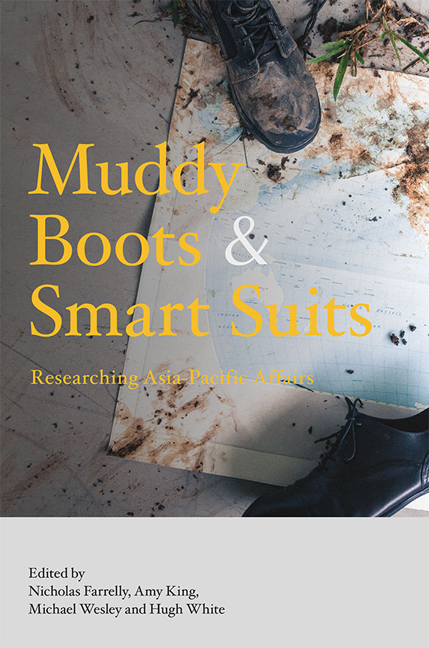Book contents
- Frontmatter
- Contents
- About the Contributors
- 1 Introduction to Research in Asia-Pacific Affairs
- Section I In the Field
- Section II Analysing Politics
- 5 The Design-based Revolution in Comparative Politics
- 6 Count Me In: Quantitative Research in Asia-Pacific Affairs
- Section III Shaping a Region
- Section IV Conflict and Order
- Section V Policy and Practice
- Bibliography
- Index
6 - Count Me In: Quantitative Research in Asia-Pacific Affairs
from Section II - Analysing Politics
Published online by Cambridge University Press: 12 January 2018
- Frontmatter
- Contents
- About the Contributors
- 1 Introduction to Research in Asia-Pacific Affairs
- Section I In the Field
- Section II Analysing Politics
- 5 The Design-based Revolution in Comparative Politics
- 6 Count Me In: Quantitative Research in Asia-Pacific Affairs
- Section III Shaping a Region
- Section IV Conflict and Order
- Section V Policy and Practice
- Bibliography
- Index
Summary
INTRODUCTION
Statistical research methods are already very big in many of the social sciences. For decades, it has been well-nigh impossible to get an academic appointment in economics without a thorough grounding in quantitative research. The same is increasingly becoming true in political science (at least in the United States), psychology and to a lesser degree sociology. Even in the humanities, the quants are making inroads — economic history, for instance, increasingly resembles economics more than it does other subfields of history, and some have even sought to apply quantitative analytic tools to the analysis of literature. Nor is this phenomenon confined to the ivory tower. With the exponential growth of marketing opportunities represented by new data-rich companies such as Facebook, Twitter, Linkedin, and Amazon, “data scientist” is, according to the Harvard Business Review, the “sexiest job of the 21st century” (Davenport and Patil 2012). Similarly, the mathematical requirements of financial engineering are becoming so intense that Wall Street, the City of London, and other finance houses are raiding not only economics but also mathematics and physics PhD programmes in order to find analysts with the requisite skills (Lewis 2015).
Statistical and other quantitative methods are powerful tools in the hands of researchers, policymakers, and the public, when used correctly. The first part of this chapter will outline why researchers use quantitative methods in the social sciences. Human brains, even expert human brains, can be horribly wrong in extrapolating general trends from small numbers of events. Where there are multiple cases at hand of a phenomenon in which we are interested, statistics therefore allows us to see the general trend better than anything else. But quantitative methods can be misused. When they are misused, this can be dangerous because a conclusion couched in terms of numbers and endowed with the prestige of science often commands more confidence than it warrants. Costly errors can result, as the 2008 Global Financial Crisis shows us. Good quantitative researchers are aware of such pitfalls, however, and make strenuous efforts to avoid them. In the second part of this chapter, therefore, I will outline some cautions about the application of quantitative research to the social sciences.
- Type
- Chapter
- Information
- Muddy Boots and Smart SuitsResearching Asia-Pacific Affairs, pp. 73 - 92Publisher: ISEAS–Yusof Ishak InstitutePrint publication year: 2017



